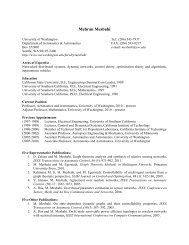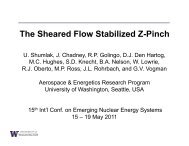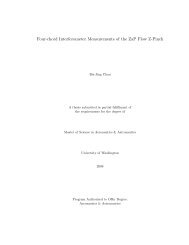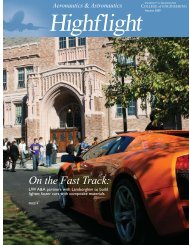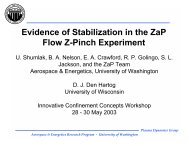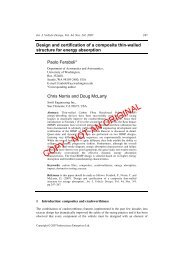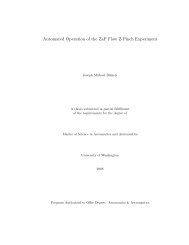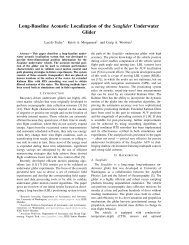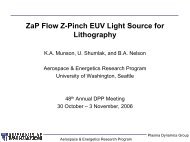Distributed Reactive Collision Avoidance - University of Washington
Distributed Reactive Collision Avoidance - University of Washington
Distributed Reactive Collision Avoidance - University of Washington
Create successful ePaper yourself
Turn your PDF publications into a flip-book with our unique Google optimized e-Paper software.
6<br />
1.2 Literature Review<br />
Much work has been done on the collision avoidance problem to date, and a wide variety<br />
<strong>of</strong> solutions have been proposed. While each <strong>of</strong> these answers solves a piece <strong>of</strong> the puzzle,<br />
they also have limitations that keep them from solving the wide range <strong>of</strong> applications that<br />
the work in this dissertation seeks to address. However, they also form the foundation <strong>of</strong><br />
tools and ideas on which this work has been built.<br />
An early theoretical work on collision avoidance [6] showed a method <strong>of</strong> designing<br />
avoidance controllers for a general class <strong>of</strong> vehicle models and constraints. The mathematical<br />
foundation is solid in that it presents a pro<strong>of</strong> to avoid not just another vehicle, but<br />
an adversary. The method is limited because it requires finding an appropriate Lyapunov<br />
function, which is <strong>of</strong>ten a nontrivial task, and it only works for two-vehicle systems.<br />
The collision cone concept, introduced in [7] and subsequently used in the deconfliction<br />
literature [8, 9, 10, 11, 12], is a first order look ahead for detecting conflicts. The collision<br />
cone is a set <strong>of</strong> velocities for one vehicle that will cause it to collide with another, assuming<br />
each <strong>of</strong> their velocities are constant. While most algorithms using the collision cone define<br />
collision by the distance between two points (as though each vehicle is a disk or sphere),<br />
[7] shows how the method also works for irregularly shaped objects. An extension <strong>of</strong> the<br />
collision cone concept to accelerating vehicles was shown in [9], but the resulting conflict<br />
region is nonlinear and difficult to describe analytically, which limits its use for collision<br />
avoidance.<br />
A three-dimensional version <strong>of</strong> the original collision cone was used in [10] to avoid<br />
conflicts pairwise. Separate solutions were found using speed changes, heading changes,<br />
and flight path angle changes, but not in combination. An extension <strong>of</strong> that work to handle<br />
simultaneous speed, heading, and flight path angle changes was shown in [11]. Extensive<br />
real-world simulations were shown for two aircraft, but the algorithm is not designed for<br />
larger numbers <strong>of</strong> interacting vehicles.<br />
An application <strong>of</strong> the collision cone to three-dimensional air traffic control is presented



